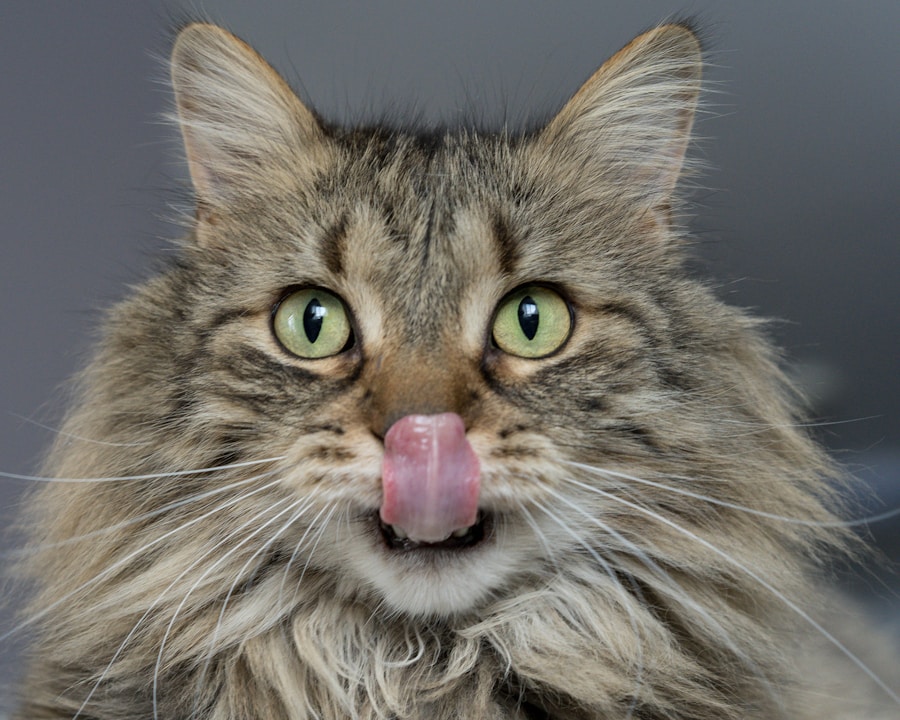Kitty litter training is an essential part of owning a cat. It not only helps to keep your home clean and odor-free, but it also ensures that your cat has a designated area to relieve themselves. Proper litter training can also prevent your cat from having accidents around the house, which can be frustrating and difficult to clean up. Additionally, litter training can help to prevent your cat from developing behavioral issues related to their bathroom habits. Overall, kitty litter training is crucial for both the well-being of your cat and the cleanliness of your home.
Proper litter training can also help to strengthen the bond between you and your cat. By providing them with a comfortable and clean space to do their business, you are showing them that you care about their needs and are willing to provide for them. This can help to build trust and create a positive relationship between you and your feline friend. Additionally, a well-trained cat is more likely to be welcomed in other homes and public spaces, as they will be less likely to have accidents or cause disruptions.
Choosing the Right Litter Box and Litter
When it comes to kitty litter training, choosing the right litter box and litter is crucial. There are many different types of litter boxes available, including open, closed, and self-cleaning options. It’s important to consider the size of your cat, the space in your home, and your own preferences when selecting a litter box. Some cats may prefer a larger, open litter box, while others may feel more comfortable in a smaller, enclosed space. It’s also important to consider the ease of cleaning and maintenance when choosing a litter box.
In addition to selecting the right litter box, choosing the right litter is also important. There are many different types of litter available, including clumping, non-clumping, scented, unscented, and natural options. It’s important to consider your cat’s preferences and any potential allergies or sensitivities when selecting a litter. Some cats may prefer a softer, finer litter, while others may prefer a coarser texture. It’s also important to consider the odor control and ease of cleaning when choosing a litter.
Introducing Your Kitten to the Litter Box
Introducing your kitten to the litter box is an important step in kitty litter training. It’s important to start this process as soon as you bring your kitten home, as they will need to learn where to go to the bathroom. Start by placing the litter box in a quiet, easily accessible location in your home. Show your kitten where the litter box is and gently place them inside so they can explore. You may need to gently take their paw and show them how to scratch at the litter to cover their waste.
It’s important to be patient and consistent during this process, as it may take some time for your kitten to get used to using the litter box. Be sure to praise and reward your kitten when they use the litter box properly, as this will help to reinforce the behavior. If your kitten has an accident outside of the litter box, it’s important not to scold or punish them, as this can create fear and anxiety around using the litter box.
Encouraging Proper Litter Box Use
Once your kitten has become accustomed to using the litter box, it’s important to encourage proper litter box use on a regular basis. This includes keeping the litter box clean and well-maintained, as cats are more likely to use a clean litter box. Be sure to scoop the litter box daily and change the litter regularly to prevent odors and keep it inviting for your cat. It’s also important to provide enough litter boxes for multiple cats in your household, as some cats may prefer their own designated space.
Additionally, it’s important to provide positive reinforcement for proper litter box use. Praise and reward your cat when they use the litter box properly, as this will help to reinforce the behavior. You can also consider using pheromone sprays or diffusers near the litter box to help create a calming environment for your cat. It’s also important to monitor your cat’s behavior and look for any signs of discomfort or reluctance to use the litter box, as this could indicate a potential health issue that needs to be addressed.
Dealing with Litter Box Accidents
Despite your best efforts, accidents may still occur during kitty litter training. It’s important not to scold or punish your cat for having an accident, as this can create fear and anxiety around using the litter box. Instead, focus on cleaning up the accident promptly and thoroughly to prevent odors and discourage repeat incidents. Use an enzymatic cleaner specifically designed for pet messes to effectively remove any traces of urine or feces from carpets, floors, or furniture.
If accidents continue to occur despite your efforts, it’s important to consult with a veterinarian to rule out any potential health issues that may be causing your cat to have accidents. In some cases, cats may have urinary tract infections or other medical conditions that need to be addressed in order to prevent further accidents. Additionally, it’s important to consider any changes in your cat’s environment or routine that may be causing stress or anxiety, as this can also lead to litter box accidents.
Tips for Successful Kitty Litter Training
There are several tips and strategies that can help to ensure successful kitty litter training for your cat. First and foremost, it’s important to be patient and consistent throughout the training process. Cats may take some time to get used to using the litter box, so it’s important not to rush or force them into using it before they are ready. Be sure to provide plenty of positive reinforcement for proper litter box use, including praise and rewards for using the litter box properly.
It’s also important to keep the litter box clean and well-maintained in order to encourage proper use. Be sure to scoop the litter box daily and change the litter regularly to prevent odors and keep it inviting for your cat. Additionally, providing enough litter boxes for multiple cats in your household can help to prevent territorial issues and encourage proper use. Finally, be sure to monitor your cat’s behavior and look for any signs of discomfort or reluctance to use the litter box, as this could indicate a potential health issue that needs to be addressed.
Troubleshooting Common Litter Box Issues
There are several common issues that may arise when it comes to kitty litter training that may need troubleshooting. One common issue is cats refusing to use the litter box due to its location or type of litter used. In this case, it may be helpful to experiment with different types of litter or move the location of the litter box to a more private or accessible area. Another common issue is cats spraying or marking outside of the litter box, which may indicate territorial issues or stress.
If you are experiencing ongoing issues with kitty litter training despite your best efforts, it may be helpful to consult with a veterinarian or animal behaviorist for additional support and guidance. They can help to identify any underlying health issues or behavioral issues that may be contributing to the problem and provide personalized recommendations for addressing them. Additionally, they can provide tips and strategies for managing any ongoing issues with kitty litter training in order to ensure success for both you and your feline friend.
In conclusion, kitty litter training is an essential part of owning a cat that can help to keep your home clean and odor-free while also ensuring the well-being of your feline friend. By choosing the right litter box and litter, introducing your kitten to the litter box, encouraging proper use, dealing with accidents, and implementing tips for success, you can ensure successful kitty litter training for your cat. If you encounter any ongoing issues with kitty litter training, it’s important not to give up hope but instead seek out additional support and guidance from professionals who can help you troubleshoot any issues and find solutions that work for you and your cat. With patience, consistency, and positive reinforcement, you can successfully train your cat to use the litter box and enjoy a clean and harmonious living environment together.





